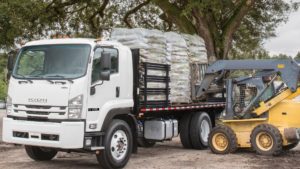Definitions
“Air suspension system” means a system in which at least 75 per cent of the spring effect is caused by the elasticity of a confined gas.
“Alternative fuels” shall mean fuels or power sources which serve, at least partly, as a substitute for fossil oil sources in the energy supply to transport and which have the potential to contribute to its decarbonisation and enhance the environmental performance of the transport sector, consisting of:
(a) electricity consumed in all types of electric vehicles;
(b) hydrogen;
(c) natural gas, including biomethane, in gaseous form (Compressed Natural Gas – CNG) and liquefied form (Liquefied Natural Gas – LNG);
(d) Liquefied Petroleum Gas (LPG);
(e) mechanical energy from on-board storage/on-board sources, including waste heat;
“Alternatively fuelled vehicle” shall mean a motor vehicle powered wholly or in part by an alternative fuel and which has been approved under the framework of Directive 2007/46/EC.
“Appropriate motor vehicle” means a mechanically propelled vehicle having at least three axles, twin tyres, air suspension or an equivalent suspension on each driving axle and ABS brakes. The vehicle must also be fitted with a plate complying with the requirements of the Regulations of 2000.
“Appropriate semi-trailer”1 means a semi-trailer which has an air suspension or an equivalent suspension and ABS brakes. It must also be fitted with a plate complying with the requirements of the Regulations of 2000.
“Articulated bus” means a large public service vehicle so constructed that –
(a) 2 rigid intercommunicating passenger compartments are connected by an articulated section allowing free movement of passengers between the 2 compartments, and
(b) connection and division of the 2 compartments is possible only in a workshop.
“Articulated vehicle” means the combination of a mechanically propelled vehicle and a drawn vehicle attached by partial superimposition and so constructed and attached that not less than 20 per cent of the weight of the drawn vehicle is borne by the mechanically propelled vehicle.
“Combination of vehicles” means a combination of a mechanically propelled vehicle and one trailer.
“Conditioned vehicle” means a mechanically propelled vehicle, trailer or semi-trailer with a design gross vehicle weight in excess of 3,500 kilograms, whose fixed or movable superstructure is specially equipped for the carriage of goods at controlled temperatures and whose side walls, inclusive of insulation, are each at least 45 millimetres thick.
“Council Directive” means Council Directive 96/53/EC of 25 July 1996.
“Equivalent system” means a suspension system which fulfills the conditions for equivalence to air suspension as set out in Annex II to the Council Directive.
“Four axle bogie” means 4 successive axles the outermost of which are spaced at a distance apart of less than 4.3 metres.
“Intermodal journey” means a journey to or from a rail terminal or a seaport in the State for onward transfer of goods, such that the goods themselves are not handled in changing modes.
“Large tractor” means a mechanically propelled vehicle which is not constructed to carry any load itself and which has an un-laden weight in excess of 7.25 tonnes.
“Refrigerated vehicle” means any mechanically propelled vehicle, trailer or semi-trailer specially designed and constructed for the carriage of goods at a temperature below the ambient temperature.
“Regulations of 2000” means the Road Traffic (Construction, Equipment and Use of Vehicles) (Amendment) Regulations 2000 (S.I. No. 224 of 2000).
“Semi-trailer” means the drawn component of an articulated vehicle, or a vehicle constructed or adapted for use as such drawn component.
“Tandem axles” means 2 successive axles, not being part of a triaxle or a four axle bogie which are spaced at a distance apart of not more than 2.5 metres.
“Tractor unit” means the drawing component of an articulated vehicle.
“Triaxle” means 3 successive axles, not being part of a four axle bogie, the outermost of which are spaced at a distance apart of not more than 3.25 metres.
“Vehicle transporter” means a vehicle constructed or adapted to carry 2 or more vehicles.





